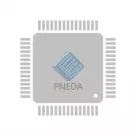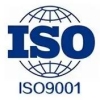Optimize the image sensor platform to meet the requirements of challenging shooting scenes in cars

Driven by both safety and convenience features, the demand for driver assistance systems is growing, and the number of systems in the car with imaging capabilities is also rising rapidly. These advanced driver assistance systems enable functions such as adaptive cruise control and automatic emergency braking. In addition, this includes parking assistance features such as rear-view cameras (now mandatory in the United States for every new car), 360-degree round-view systems, and emerging applications such as camera monitoring systems that replace traditional rear-view mirrors.
The operating conditions and parameters in the automotive environment are often very challenging for image sensors. The dynamic range of the scene can exceed 140dB, with a sharp contrast between the brightest areas (such as sunlight directly on the camera's field of view) and the dark areas (inside the tunnel). For this type of scene with a high dynamic range output, it is important to photograph every detail possible in order to present a clear scene for the Advanced Driver Assistance system (ADAS) algorithms and the driver. If imaging technology does not clearly present objects and hazards, it is likely to compromise safety
The imaging problem is complicated by the recent trend by automobile manufacturers to adopt pulse-width modulated LED lighting in vehicles and the increasing use of the same technology in electronic traffic signs and vehicle communication systems. The reason why this type of pulse lighting system is becoming more and more popular is that it saves electricity, the lighting effect is superior, and the design can be improved. Although this pulse is invisible to the human eye, when shooting with a traditional camera, especially in bright light, because the camera is usually shooting the scene with the light off, the captured pulse light appears to flicker. This can cause problems for the ADAS algorithm, causing it to miss key information on electronic traffic signs and distracting drivers, and it can even cause the ADAS algorithm to confuse the flashing headlights of ordinary vehicles with those of emergency vehicles.
Therefore, image sensors used in automobiles must solve the flicker problem caused by pulsed LED light sources. However, capturing in the short "on" state of pulsed leds requires longer exposure times, contradicts the high dynamic range performance required to achieve hybrid lighting scenes, and introduces susaturated images in bright areas. To solve this problem and provide a high dynamic range output including a solution to reduce LED flicker, an innovative high charge-capacity CMOS image sensor is required that can be exposed long enough to capture the pulsed light source without saturating the bright areas of the scene. That's what On Semiconductor is doing with its new HayabusaM automotive image sensor platform, which features a "super exposure" feature that allows exposure times more than five times that of conventional automotive image sensors.
The Hayabusa platform is a family of image sensors with an image cable range of 1Mp to 5Mp for a wide range of applications, using a common image cable, design and real-time functional safety architecture to solve these imaging problems. This platform-based approach has the added advantage of simplifying design, reducing time to market, and optimizing scalability for different models from the same manufacturer. In this way, the development work and data collected by engineers on one sensor can be transplanted to another sensor with a different resolution, without the need for new development, avoiding time-consuming and costly repetitive design work
The Products You May Be Interested In
 |
AISM-1812-R39M-T | FIXED IND 390NH 575MA 300 MOHM | 3204 More on Order |
 |
AMJDEGJ-A11 | OSC MEMS XO DUAL OUTPUT | 8442 More on Order |
 |
AWSZT-12.00MXD-T | CER RES 12.0000MHZ SMD | 8838 More on Order |
 |
AMPMEGD-66.6666T3 | MEMS OSC XO 66.6666MHZ CMOS SMD | 4824 More on Order |
 |
AMPMEDC-24.5760T3 | MEMS OSC XO 24.5760MHZ CMOS SMD | 7884 More on Order |
 |
AMPMDDC-64.0000T3 | MEMS OSC XO 64.0000MHZ CMOS SMD | 7362 More on Order |
 |
AMPMAGB-74.2500T3 | MEMS OSC XO 74.2500MHZ CMOS SMD | 3222 More on Order |
 |
AMPMAFB-21.0000T3 | MEMS OSC XO 21.0000MHZ CMOS SMD | 6732 More on Order |
 |
AMPMEEA-72.0000T | MEMS OSC XO 72.0000MHZ CMOS SMD | 8388 More on Order |
 |
AMPMEDC-24.5000T | MEMS OSC XO 24.5000MHZ CMOS SMD | 6264 More on Order |
 |
AMPMDDC-33.0000 | MEMS OSC XO 33.0000MHZ CMOS SMD | 2772 More on Order |
 |
AMPMGGA-66.6660 | MEMS OSC XO 66.6660MHZ CMOS SMD | 4500 More on Order |
 |
AMPMAFB-72.0000 | MEMS OSC XO 72.0000MHZ CMOS SMD | 7506 More on Order |
 |
ASTMUPCD-33-26.000MHZ-EY-E-T | MEMS OSC XO 26.0000MHZ LVCMOS | 3420 More on Order |
 |
AX5DCF4-1090.0000T | OSC XO 1.09GHZ 1.8V LVDS | 2664 More on Order |
 |
AX7PAF1-693.4800T | XTAL OSC XO 693.4800MHZ LVPECL | 5508 More on Order |
 |
AX7PAF3-537.6000T | XTAL OSC XO 537.6000MHZ LVPECL | 5364 More on Order |
 |
AX7DAF1-150.0000C | XTAL OSC XO 150.0000MHZ LVDS SMD | 8838 More on Order |
 |
AX5PAF3-156.2500C | OSC XO 156.25MHZ 3.3V LVPECL | 7560 More on Order |
 |
AX7DBF1-77.7600T | XTAL OSC XO 77.7600MHZ LVDS SMD | 8586 More on Order |
 |
ASE2-33.333MHZ-ET | XTAL OSC XO 33.3330MHZ CMOS SMD | 8100 More on Order |
 |
AOCTQ5-X-10.000MHZ-M5-SW | XTAL OSC OCXO 10.0000MHZ SNWV TH | 8784 More on Order |
 |
ABM10W-27.0000MHZ-6-D2X-T3 | CRYSTAL 27.0000MHZ 6PF SMD | 6948 More on Order |
 |
ABM8W-16.0000MHZ-6-D1X-T3 | CRYSTAL 16.0000MHZ 6PF SMD | 7200 More on Order |









